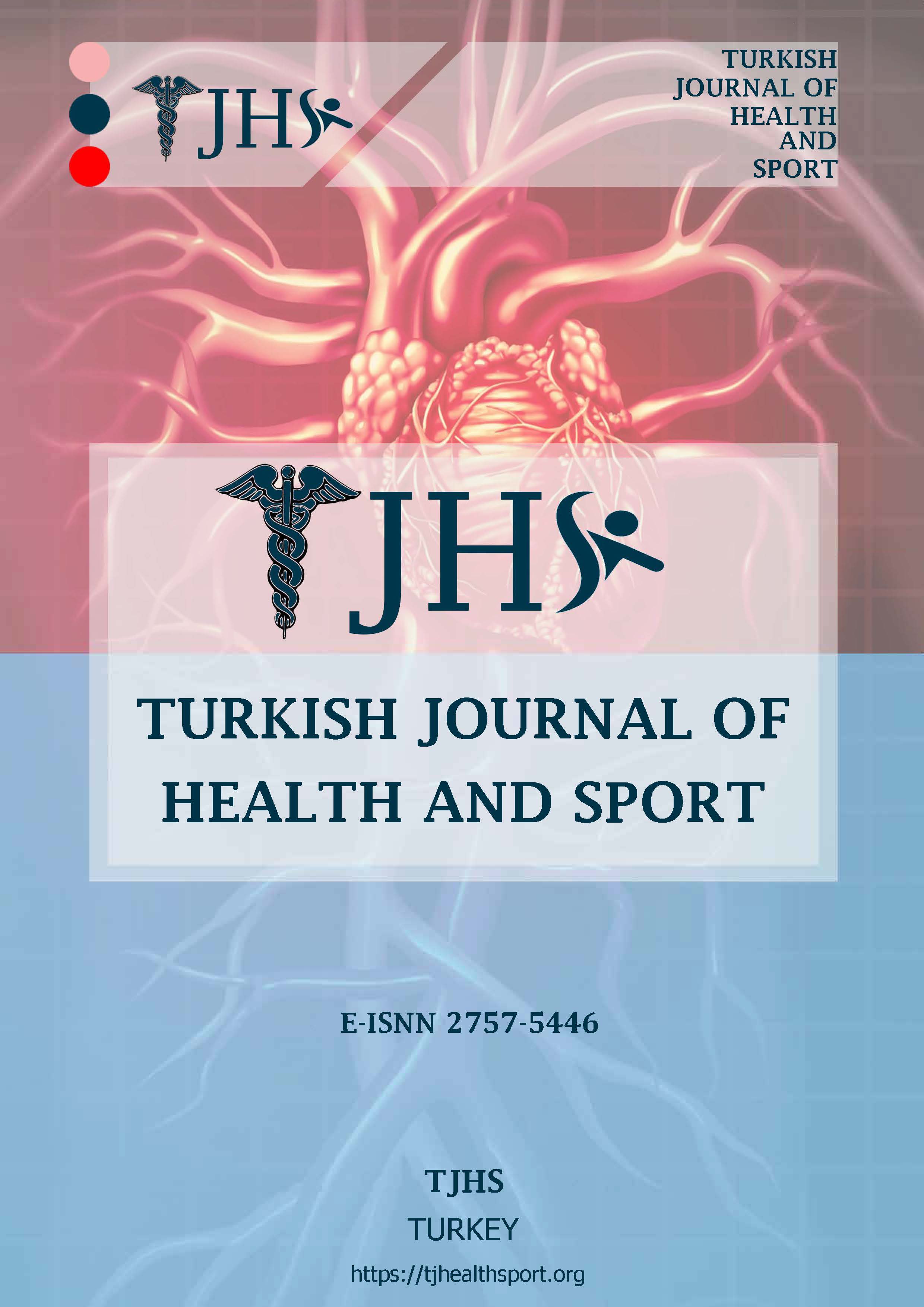Adölesan Voleybolcu ve Sedanterlerde Üst Ekstremite Esneklik, Kuvvet, Dayanıklılık, Hız, Denge ve Yaşam Kalitesi Arasındaki Farkların İncelenmesi
Author :
Abstract
Amaç: Bu çalışmanın amacı adölesan voleybolcu ve sedanterler arasındaki üst ekstremite esneklik, kuvvet, dayanıklılık, hız, denge ve yaşam kalitesini incelemektir.
Yöntem: Çalışmaya yaşları 12-18 arası 20 adölesan voleybolcu ve 20 adölesan sedanter olmak üzere toplam 40 kişi dahil edildi. Üst ekstremite esnekliğini değerlendirmek için Sırt Kaşıma Testi; kuvvetini değerlendirmek için El Pençe Kuvvet Testi, Modifiye Push-up Testi ve Sağlık Topu Fırlatma Testi; dayanıklılığını değerlendirmek için Bükülü Kol Asılma Testi; hızını değerlendirmek için Disklere Dokunma Testi; dengesini değerlendirmek için Y Denge Testi ve yaşam kalitesini değerlendirmek için WHOQOL-BREF anketi uygulandı. ‘Bağımsız örneklem t testi’ ile gruplar arası istatistiksel analiz yapıldı.
Bulgular: Adölesan voleybolcu ve adölesan sedanter grupları arasında Modifiye Push-up Testi, Sağlık Topu Fırlatma Testi, Bükülü Kol Asılma Testi, Disklere Dokunma Testi ve Y Denge Testi değerlendirmeleri sonucu elde edilen verilerde istatistiksel olarak anlamlı farklılıklar tespit edildi (p<0,05). Adölesan voleybolcu grubun üst esktremite kuvvet, dayanıklılık, hız ve denge parametrelerinin adölesan sedanter gruba göre daha iyi olduğu belirlendi (p<0,05).
Tartışma: Çalışmanın sonucunda, adölesan dönemde bireylerin voleybol oynamalarının üst ekstremite kuvvet, dayanıklılık, hız ve dengesine olumlu katkılar sağladığı görüldü. Bu dönemdeki bireylerin spora yönlendirilmesi bireyin fiziksel, psikolojik ve sosyal gelişimine ve ileriki spor performansına etki edebilir.
Keywords
Abstract
Purpose: The aim of this study was to investigate flexibility, strenght, endurance, speed, balance of upper extremity and quality of life among adolescent volleyball players and sedentary.
Methods: 20 adolescent volleyball players and 20 adolescent sedentary totally 40 participants, who were aged between 12-18 years, were included in the study. Back Scratch Test, Hand Claw Force Test, Modified Push-up Test, Medicine Ball Throwing, Bent Arm Hang Test, Plate Tapping Test, Upper Extremity Y Balance Test, WHOQOL-BREF were used to evaluate flexibility, strenght, endurance, speed, balance of upper extremity and quality of life. ‘İndependent sample t-test’ was used for statistical analysis.
Results: Statistically significant changes were detected in datas obtained as a result of Modified Push-up Test, Medicine Ball Throwing, Bent Arm Hang Test, Plate Tapping Test and Upper Extremity Y Balance Test evaluations (p<0,05). It was determined that the upper extremity strength, endurance, speed and balance parameters of the adolescent volleyball player group were better than the adolescent sedentary group (p<0,05).
Conclusion: As a result of the study, it was seen that playing volleyball in adolescence contributes positively to upper extremity strength, endurance, speed and balance. İndividuals in this period directing to sports may affect the physical, psychological and social development of the individual and their future sports performance.





